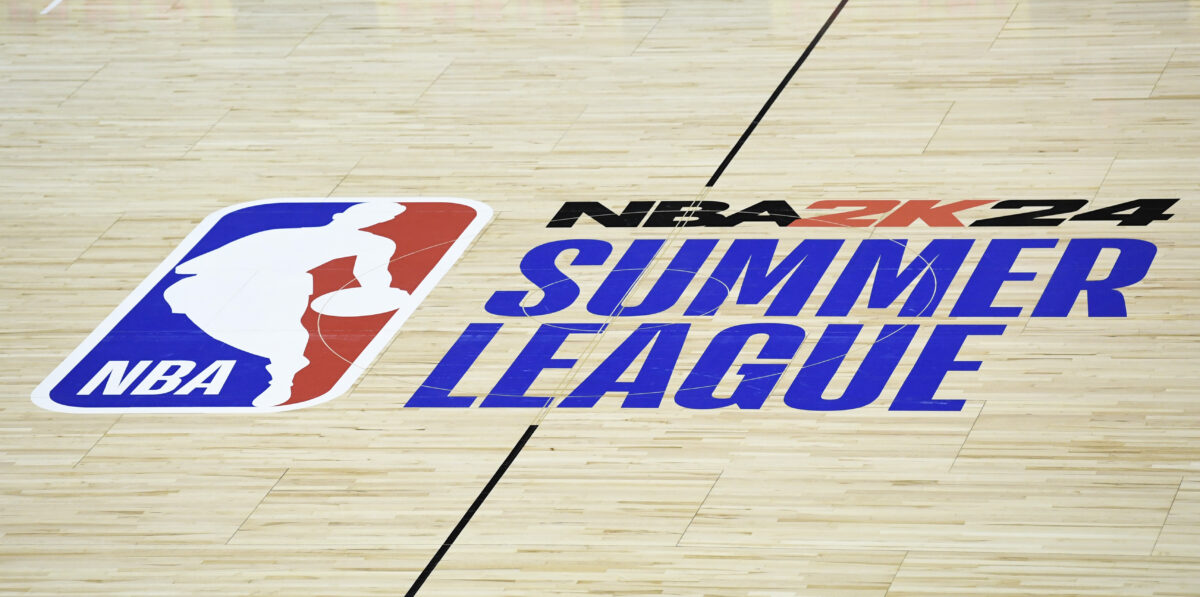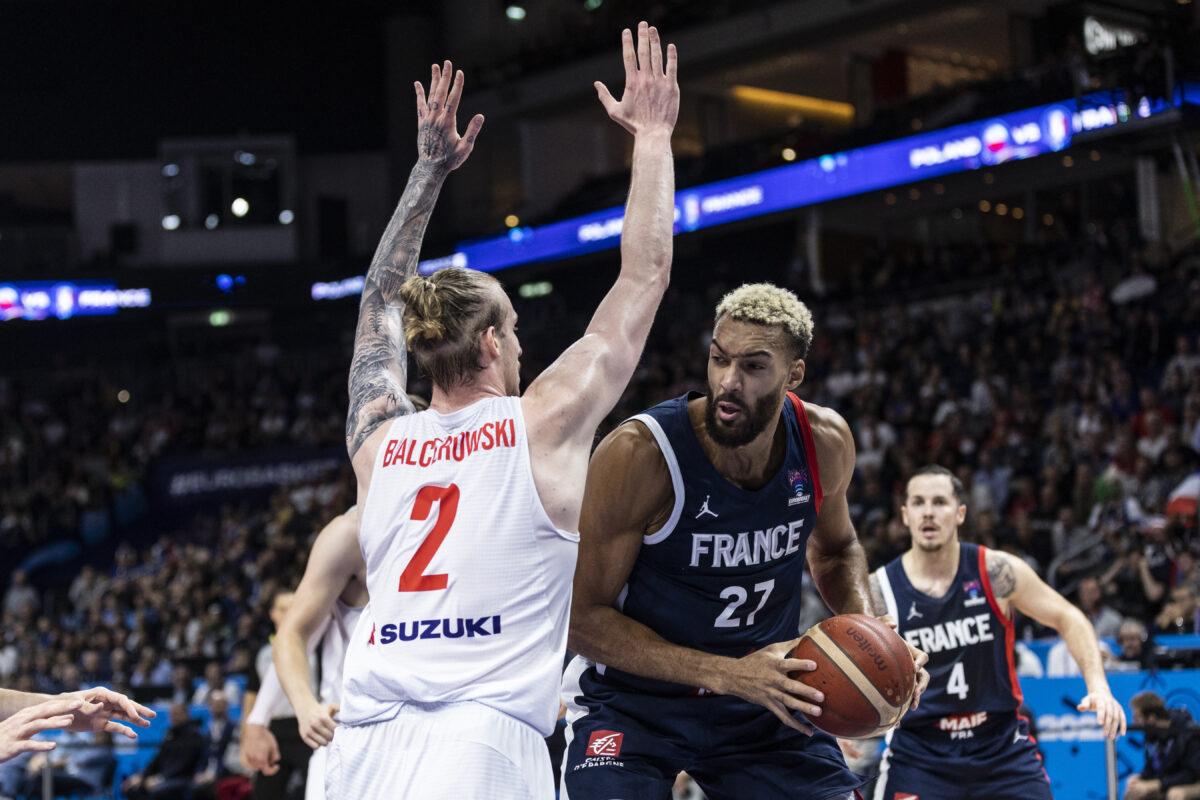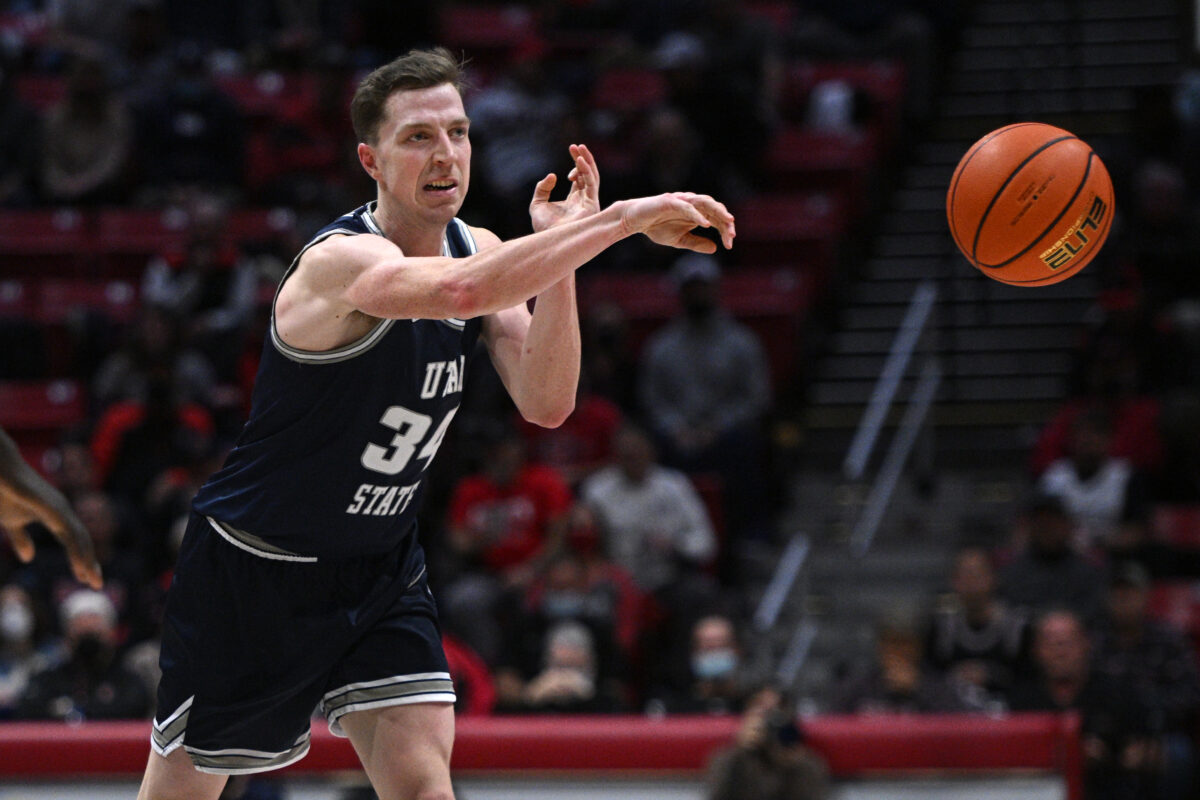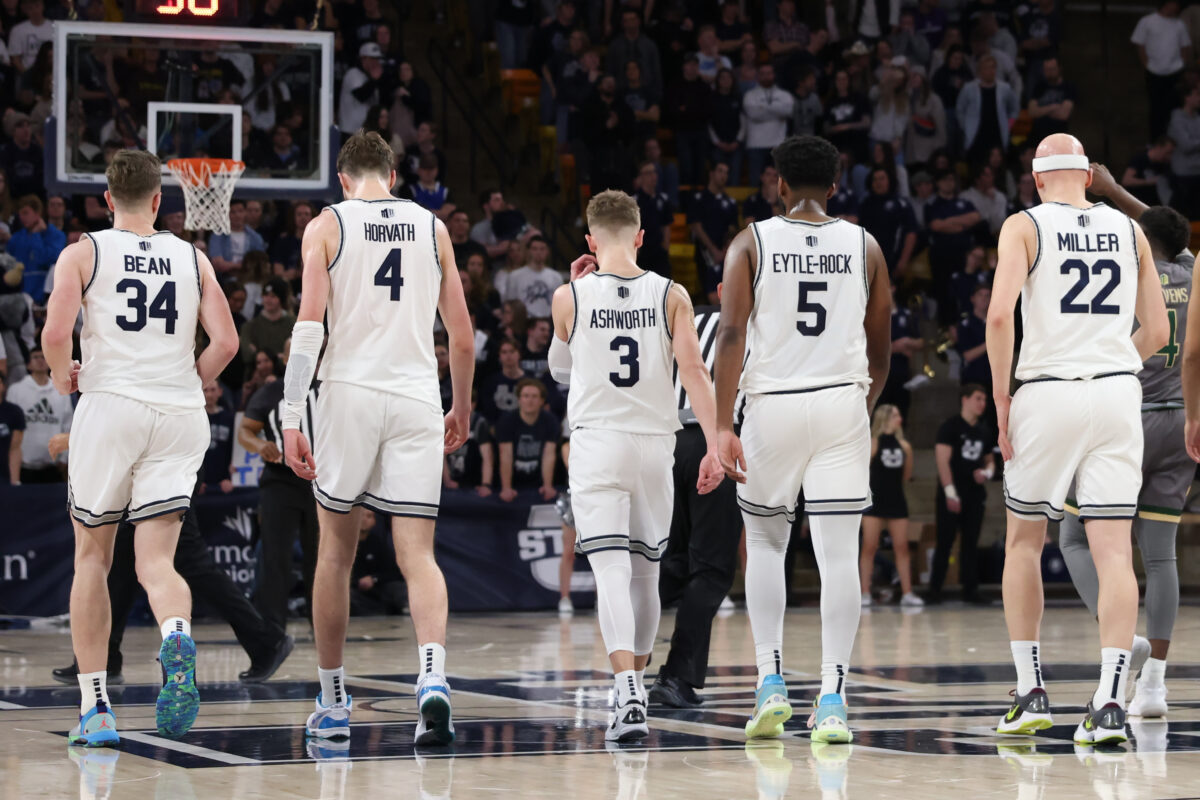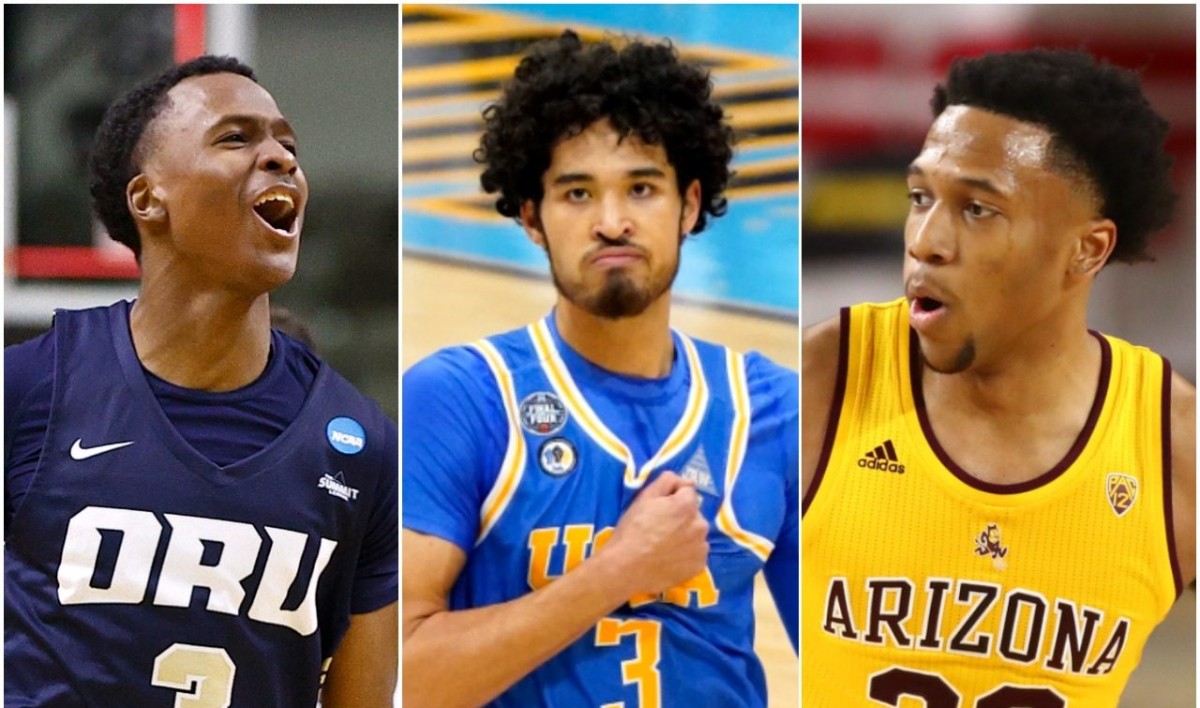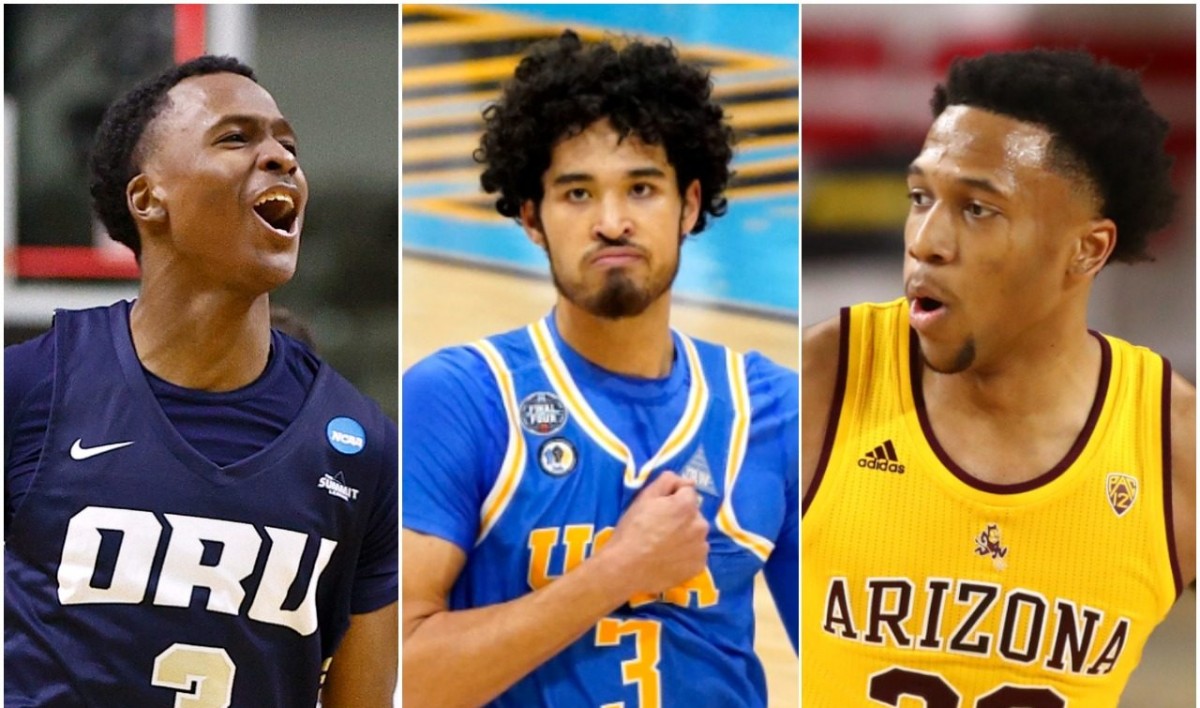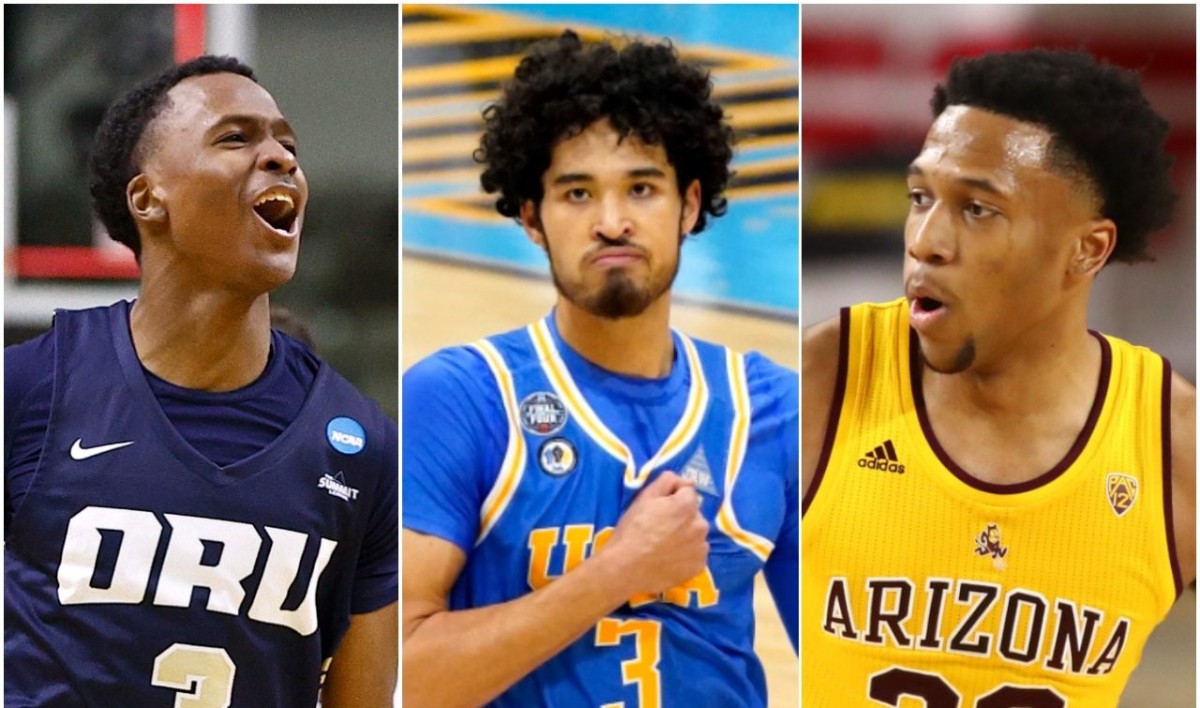[jwplayer 18QegcJn-sNi3MVSU]
Five For ’21: Ranking The Mountain West’s Top Five Defenders
Predicting the top five Mountain West defenders of the ’20-21 season
Contact/Follow @HardwoodTalk & @MWCwire
Who are the top defenders in the MW?
In the fourth installment of Mountain West Wire’s offseason series, Five for ’21, we stick with the defensive side of the ball as was started by my co-writer of this series Andrew Dieckhoff yesterday with the conference’s best shot blockers.
Just a reminder that the Five For ’21 series features our ranking of the top five Mountain West players in five different skill sets: passing, scoring, defending, rebounding, and shot blocking.
For the sake of avoiding redundancy, the top defenders list is focused more so on guards and wings than big men. With that in mind, any player that was selected to the shot blockers list is prevented from appearing on the top defenders list.
The Five For ’21 series schedule is below.
- Monday: Passers
- Tuesday: Scorers
- Wednesday: Shot Blockers
- Thursday: Defenders
- Friday: Rebounders
Without further adieu, let’s take a look at the conference’s best defenders.
’19-20: 100.9 DRtg, 1.1 DBPM, 1.2 SPG, 2.1 STL%, 3.5 FLS/40
I think it’s easy to say, Maldonado is an absolute baller as he finds his way onto our second Five for ’21 ranking of the week. Maldonado secured the number two spot on our best passers list while also challenging our methods as an honorable mention in our best scorers list.
It’s absolutely impressive of how much of a do-it-all kind of player Maldonado is and the mark he has made on the conference in just his first two seasons in Laramie. I think I can speak for anybody who thinks losing the 6-7 combo guard to transfer amid Wyoming’s coaching change back in spring would have been a disservice to the conference. He does it all but absolutely terrorizes smaller guards with his length and athleticism at the top of the key. As we often see him sitting and waiting for opportunities for breakaway steals that lead to layups, dunks or dish offs at the other end.
As with every other category Maldonado dominates in, there is room for efficiency improvement. But for a player who was asked to be the leading scorer, rebounder and floor general on multiple occasions last season, I think we can learn to not dwell too heavily on past numbers in Laramie. While we look onward to Maldonado’s potential next season with a new head coach and some reinforcements hoping to climb out of the conference’s cellar going forward.
’19-20: 104.9 DRtg, 1.7 DBPM, 1.3 SPG, 2.5 STL%, 2.6 FLS/40
Moore is an interesting defender, simply due to his stature at 5-10, 145 pounds. If there’s ever been a stereotype holding true in Moore’s defensive game, it is that of the speedy, smaller and pesky guard who get’s into your dribble just a little more effortlessly than bigger guards are able to.
If there is a metric to look at in direct relation to his pick-pocketing abilities it’s the fact that he only averages 2.6 fouls per forty minutes, where the rest of the league’s best defenders mentioned on this list find themselves averaging anywhere from 3.0-4.4. Where he loses out and finds himself a little lower on the list than others with similar metrics is his size and frame. He has a defensive rating of 104.9 which on the flip side is much higher than anyone else on this list as well as some of the honorable mentions considered for his number four spot.
Still, Moore has been a tremendous two-way talent in Fort Collins since following head coach Niko Medved to the Mountain West after committing to play for him back in high school at Drake. He is a part of a youthful but talented core of backcourt players who are building a foundation at Colorado State that only seems to get better every year.
’18-19: 94.0 DRtg, 0.7 DBPM, 1.0 SPG, 1.7 BPG, 1.9 STL %, 3.3 FLS/40
Cambridge Jr. is certainly a name to keep an eye this year as far as newcomers to the conference goes. The springy 6-4 shooting guard not only puts points in the scoring column, but was one of the best at preventing opponents from doing so during his last campaign in 2018-2019. Cambridge Jr. boasts impressive statistical averages from his two seasons in the Ivy League. Not only is he to be considered a tremendous defender averaging a steal a game, he also averaged an impressive 1.7 blocks per game during his sophomore season.
He recorded a season high of 5 blocks against Stony Brook that year, nearly reaching that number again in two other outings against conference foe Harvard and LIU. If he had done that he would have had a similar game log to that of one of the Mountain West’s best shot blockers, seven-footer Neemias Queta, who recorded his own season high of five blocks on three occasions in 2019-2020.
The Wolf Pack’s latest import is going to be an exciting one for fans not only in Reno but around the conference to keep up with this season. Although Aztec fans may be acquainted with his game well enough, from back on December 29th, 2018 when the Brown Bears spent their holiday vacation securing a twenty-one point win inside Viejas Arena. Cambridge Jr. ended the night with 25 points, 4 rebounds, 3 assists, 2 steals and 1 block against the Aztecs, I can imagine the defensive attention he will receive from the next player on our list when he returns this winter.
’19-20: 89.5 DRtg, 3.5 DBPM, 1.1 SPG, 2.5 STL%, 4.4 FLS/40
Mitchell is a do it all kind of player for the Aztecs, but aside from rebounding and scoring, the 6-6 240 pound combo forward is also one of if not the team’s best returning defender. With great speed, length and a great frame Mitchell can take the task of guarding the other team’s best scorer regardless of what position they play.
Even though he recorded a high fouls per forty minutes average of 4.4, he was still able to log the second best defensive rating on this list at 89.5. A testament to his defensive hustle given right before he possibly get’s in foul trouble. We may find some of those impressive defensive numbers take a hit come next season with a larger scoring role. But keep in mind help is coming to San Diego in the form of 5-8 scoring machine Terrell Gomez.
Although Mitchell, who was the Aztec’s third leading scorer last season will surely be asked to do more with the departures of Malachi Flynn, Yanni Wetzell & K.J. Feagin. He should be up to the task to fill a similar role to that of conference Player of the Year and Defensive Player of the Year Malachi Flynn next season given his multifaceted game. As Aztec fans are hoping for no decrease in momentum after last season’s top-five national finish coupled with impressive conference dominance.
But just like the next player on this list, senior departures will definitely hurt. So now it begs the question, who will help Matt Mitchell keep defense, one of San Diego State’s biggest weapons a threat next year?
’19-20: 86.6 DRtg, 3.5 DBPM, 1.5 SPG, 2.9 STL%, 3.0 FLS/40
If you read my top-five scorers list back on Tuesday, you might remember I said Bean would make several appearances on several different lists this week. He is also one of the bigger defenders on this list at 6-7 210 pounds, though his versatility is on full display night in and night out with the Aggies and labeling him as a combo forward isn’t too far off, especially defensively.
We often find the forward battling with opposing bigs in the paint, using his everlasting motor to keep up with physically bigger opponents. While also finding him extended out to the perimeter to help cover ball screens, while also locking down players who attempt to drive it to the basket only to set up a lurking Neemias Queta whose just a step or two away from sending that shot to the bleachers.
Bean’s also responsible for the best defensive rating on this list at 86.6 while keeping his fouls per forty minutes low at just 3.0/40 min. Though part of what makes Utah State such a dangerous team is how all players buy into creating defensive stops as a unit. So with two of the conferences best defenders and fellow Aggies Diogo Brito and Sam Merrill now gone, who steps up to help Bean maintain that defensive nightmare on the perimeter?
Also considered: Zane Martin, New Mexico; Marvin Coleman, UNLV; Makuach Maluach, New Mexico; Seneca Knight, San Jose State; Kwame Marble, Wyoming; Omari Moore, San Jose State; David Roddy, Colorado State; Aguir Agau, San Diego State; Orlando Robinson, Fresno State
[lawrence-auto-related count=3 category=1361]
[protected-iframe id=”09e6ca4e11e5838c3834d87c7b471ffb-137729785-123448869″ info=”https://anchor.fm/mwwire/embed” width=”400px” height=”102px” frameborder=”0″ scrolling=”no”]
